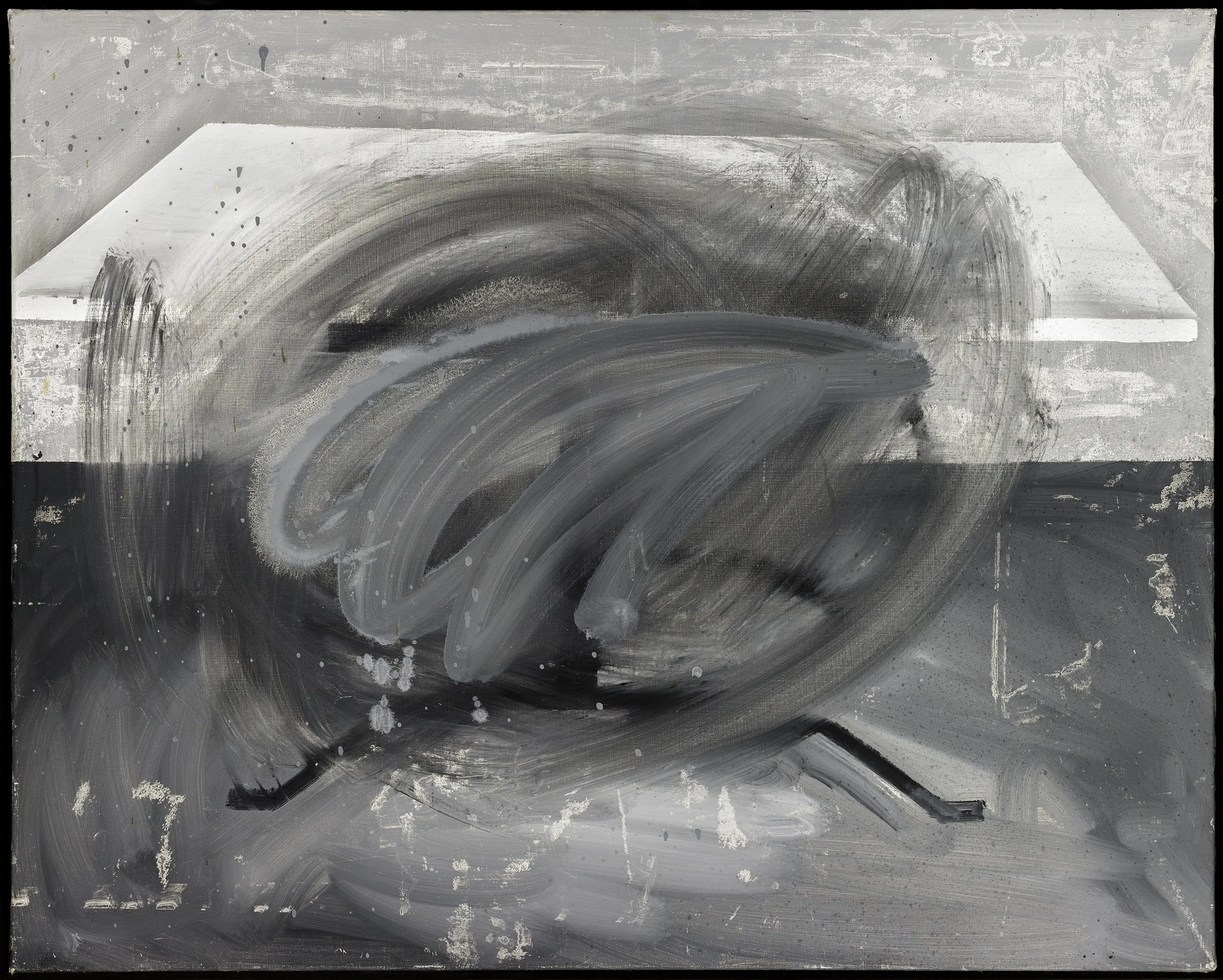Gerhard Richter at Fondation Louis Vuitton: A Journey Through Memory and Material
At the Fondation Louis Vuitton, the story of Gerhard Richter unfolds like a slow-moving film layered, deliberate, and profoundly human. Walking through the retrospective, which spans over six decades of work, feels like entering the memory of a man who has painted not just what he’s seen, but what he’s remembered, blurred, and transformed. It is a journey through light, shadow, and perception and perhaps, through time itself.
Gerhard Richter Tisch Table 1962
Born in Dresden in 1932, Richter’s formative years were marked by war and its aftermath — a childhood steeped in both ideology and survival. His early classical training at the Dresden Academy of Fine Arts shows in his immaculate technique, yet from the beginning he refused to be confined by genre. In 1961, he fled East Germany for Düsseldorf, leaving behind not only a political system but also a vision of art that was meant to serve something other than truth.
The exhibition traces that lifelong pursuit of independence. In the earliest rooms, photographs clipped from magazines and newspapers become paintings — eerily still, their edges softened by a brushstroke that transforms them from documentation to memory. Richter’s subtle blurring technique, often achieved by dragging a soft brush over wet paint, seems to pull each image into the past. Faces, soldiers, nurses, and strangers appear suspended between presence and disappearance — as if he painted not the subjects themselves, but the act of forgetting.
Gerhard Richter, Onkel Rudi [Uncle Rudi], 1965
Richter’s photo-based paintings from the 1960s, close-up of blurred portrait
It’s remarkable how this aesthetic of blurriness once a statement against certainty now feels more relevant than ever. In an age where even our photographs are filtered, pixelated, or deliberately out of focus, Richter’s paintings feel prophetic. His technique resonates with the language of contemporary photography think Paolo Roversi’s dreamlike portraits or Sarah Moon’s poetic distortions — and the visual codes we now see across fashion imagery. What was once considered abstract has become part of the modern visual lexicon: softness as mystery, imperfection as intimacy.
By the 1970s and ’80s, Richter turned to abstraction, replacing recognisable figures with vast, textured surfaces. Here, the act of painting itself becomes the subject. Using squeegees and palette knives, he layered colour upon colour, creating compositions that are both visceral and meditative. They recall the energy of abstract expressionism but with the restraint of someone deeply conscious of form. Standing before these works feels like facing a couture gown — not for what it shows, but for how it’s constructed, every gesture visible, every imperfection deliberate.
One of the most striking curatorial choices is the timeline that runs through the exhibition a discreet yet powerful reminder that Richter, now 93, has lived through nearly a century of upheaval and invention. There’s something profoundly moving about seeing such a complete creative life distilled into one architectural space. It’s impossible not to think about the quiet accumulation of our own timelines how many moments of creation, failure, and evolution we carry within us, often unnoticed until someone strings them together.
This retrospective doesn’t just honour Richter’s past; it reframes his relevance. In a cultural landscape obsessed with the new, the Fondation Louis Vuitton reminds us that the future of art often lies in the courage to look back — to re-examine, to reinterpret, to blur the lines once again.






![Richter, Carotte [Mohre], 1984 (CR 558-2)](https://images.squarespace-cdn.com/content/v1/66703abd9607c94fd848fcfd/1760953261364-1OTDGII5AT0F18FHTNZB/Gerhard+Richter%2C+Carotte+%5BMohre%5D%2C+1984+%28CR+558-2%29+%281%29.jpg)

